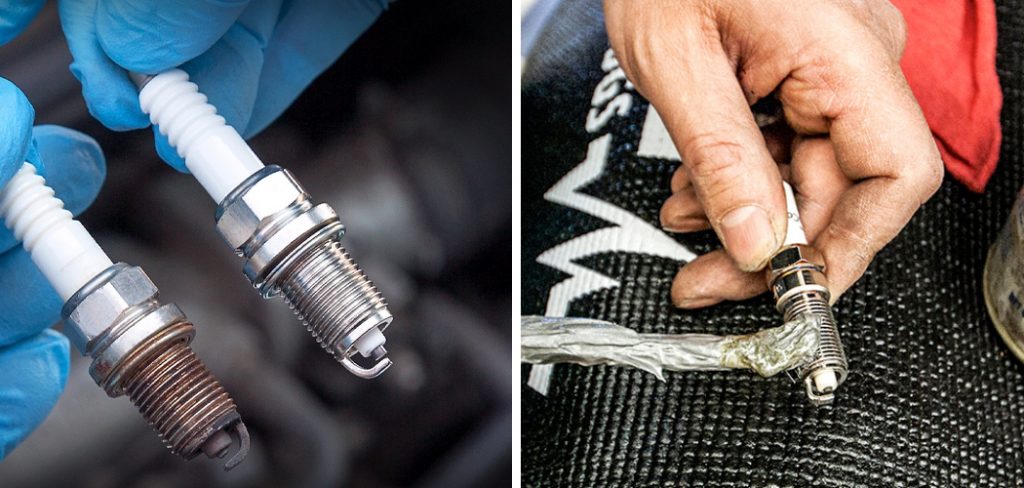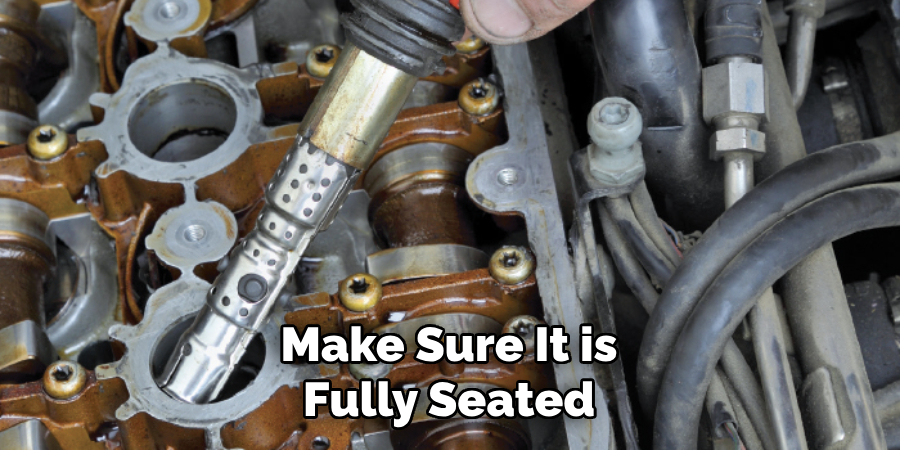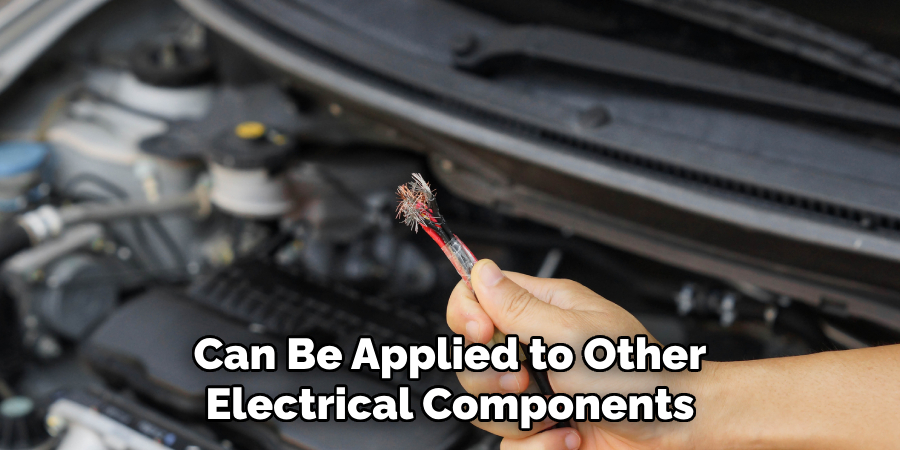Have you ever wondered whether applying dielectric grease to spark plugs makes a difference in your vehicle’s performance and engine life? I know I sure did, which prompted me on a journey to discover the benefits of using this inexpensive yet powerful compound. What started as a simple question turned into a fascinating exploration of how spark plugs work and the crucial role dielectric grease plays in protecting them from wear and corrosion.

In this blog post, I’ll explain in simple terms how to apply dielectric grease to spark plugs, why it’s important to apply it to spark plugs, and the proper technique for coating plugs with this lubricating insulator.
By learning how to use dielectric grease effectively, you could significantly extend the lifespan of your spark plugs and spark plug wires. So let’s get started on seeing how this inexpensive lubricant can potentially save you money down the road!
Supplies You Will Need to Apply Dielectric Grease to Spark Plugs
- Dielectric Grease
- Spark Plug Boot Pliers (optional)
- Clean Cloth or Paper Towel
- Latex Gloves (optional)
Step-by-step Guidelines on How to Apply Dielectric Grease to Spark Plugs
Step 1: Gather all Supplies and Prepare Work Area
Before you begin, make sure you have all the necessary supplies and tools at hand. This includes dielectric grease, spark plug boot pliers (optional), a clean cloth or paper towel, and latex gloves (optional). Also, ensure that your work area is clean and well-lit to avoid any accidents or mistakes. Preparing your supplies and workspace beforehand will save you time and make the process more manageable.
Step 2: Remove the Spark Plug Boots
Start by locating your spark plug wires, which are connected to each spark plug on top of the engine. Carefully remove each spark plug boot using a pair of pliers or by gently twisting and pulling them off with your hands.
Place the spark plug boots in a safe place, so they do not get lost or damaged. While removing the spark plug boots, take note of their condition. If they appear worn or damaged, it may be time to replace them.

Step 3: Clean the Spark Plugs and Boots
After removing the spark plug boots, use a clean cloth or paper towel to wipe off any dirt or debris from the spark plugs and boots. This step ensures that there is no buildup of material that could interfere with the dielectric grease’s effectiveness.
This is also an excellent opportunity to inspect the spark plugs and boots for any damage or wear. If you notice any issues, it’s best to replace them before proceeding with the application of dielectric grease.
Step 4: Apply Dielectric Grease
Take a small amount of dielectric grease and apply it evenly on the inside of each spark plug boot. Ensure that the entire surface is coated, but do not apply too much as it can attract dirt and dust, leading to potential issues in the future. Additionally, you can also apply a small amount of dielectric grease on the end of each spark plug before inserting it back into the boot. This will provide additional protection against moisture and corrosion.
Step 5: Reinstall Spark Plug Boots
Once you have applied dielectric grease to all the spark plug boots, carefully and securely reinstall them onto the spark plugs. Make sure they are seated properly, with no gaps or loose connections. This step is essential as it ensures that the dielectric grease effectively seals the connection, preventing any moisture or debris from entering.
Step 6: Repeat for Each Spark Plug
Repeat the process for each spark plug until all are coated and the boots are reinstalled. It’s crucial to take your time with this step, as a thorough application of dielectric grease can make a significant difference in the performance and lifespan of your spark plugs. Make sure to wipe off any excess grease that may have accumulated on the outside of the spark plug boots.

Following these simple steps will help you effectively apply dielectric grease to your spark plugs and provide long-lasting protection against moisture, dirt, and corrosion. By taking the time to properly maintain your spark plugs with dielectric grease, you can potentially save yourself money in the long run by avoiding costly repairs or replacements. So next time you change your spark plugs, don’t forget to add a little dielectric grease to keep them running smoothly. Happy driving!
Additional Tips and Tricks to Apply Dielectric Grease to Spark Plugs
1. If you have trouble removing the spark plug wire from the plug, try twisting and pulling gently at the same time. This will help loosen any debris or corrosion that may be causing it to stick.
2. When applying dielectric grease, make sure to cover the entire inside of the spark plug boot with a thin layer. This will ensure complete protection against moisture and other contaminants.
3. If you’re reusing the same spark plug wire, make sure to clean off any old grease and debris before applying a fresh layer of dielectric grease. This will maximize its effectiveness.
4. Don’t be afraid to use a little extra dielectric grease, especially if you live in an area with high humidity or frequent rain. It’s always better to have too much protection than not enough.
5. When reinstalling the spark plug wire, make sure it is fully seated onto the spark plug. A loose connection can cause misfires and result in poor engine performance.

6. It’s always a good idea to periodically clean and reapply dielectric grease to your spark plugs, especially if you live in a harsh climate or frequently drive on dusty or dirty roads. This will ensure maximum protection and prolong the life of your spark plug wires.
7. If you’re unsure about how to apply dielectric grease or have any concerns, consult a professional mechanic for assistance. They can provide guidance and ensure that the job is done correctly.
8. Remember to always follow the manufacturer’s guidelines when it comes to maintaining your vehicle’s spark plugs and spark plug wires. This includes recommended intervals for cleaning and applying dielectric grease.
9. In addition to protecting against moisture, dielectric grease can also help prevent arcing between the spark plug wire and the metal components of your engine. This can improve overall engine performance and fuel efficiency.
10. Lastly, don’t forget to properly dispose of any old or used spark plug wires. They can be recycled or disposed of at a local auto parts store or recycling center. Proper disposal helps to protect the environment and keep your vehicle running smoothly. So, it’s important to take care of them properly.
By following these tips and tricks, you can ensure that your spark plugs and spark plug wires are well-protected and functioning at their best. Regularly applying dielectric grease is a simple and cost-effective way to keep your vehicle running smoothly and avoid potential engine issues. So don’t forget to add this step to your routine vehicle maintenance! Happy driving!
Frequently Asked Questions
What is a Dielectric Grease?
Dielectric grease, also known as silicone grease or dialectic compound, is a non-conductive lubricant used to protect electrical connections and components from moisture and corrosion.
Can I Apply Dielectric Grease to Spark Plugs?
Yes, dielectric grease can be applied to the ceramic insulator of spark plugs to prevent them from seizing or sticking to the boots. It also helps to improve the electrical connection and reduce the risk of misfires.
Can I Apply Dielectric Grease to Other Electrical Components?

Yes, dielectric grease can be applied to other electrical components such as battery terminals, light bulb sockets, and wiring connections. It helps to protect them from moisture and corrosion, ensuring a stronger and more reliable connection.
How Do I Apply Dielectric Grease?
To apply dielectric grease, first clean the surface of the electrical component or connection. Then, using a small brush or your finger, apply a thin and even layer of grease onto the surface. Be careful not to over-apply as excess grease can attract dirt and debris.
Is Dielectric Grease Safe to Use?
Yes, dielectric grease is safe to use on all types of electrical connections and components. It is non-conductive and can withstand high temperatures, making it suitable for use in automotive, marine, and household applications.
How Often Should I Apply Dielectric Grease?
It is recommended to apply dielectric grease once every few years or whenever you notice signs of corrosion on the electrical components. Regular application will help to maintain a strong and reliable connection, prolonging the lifespan of your electrical system. However, if you live in a particularly humid or corrosive environment, it may be necessary to apply the grease more frequently.
Conclusion
All in all, knowing how to apply dielectric grease to spark plugs and other electrical components is an important skill for any vehicle owner or DIY enthusiast. It helps to protect your electrical system from moisture and corrosion, ensuring a strong and reliable connection. So, make sure to keep some dielectric grease on hand for your next maintenance or repair project. Happy greasing!

Fikri Elibol is a distinguished figure in the world of jeepfixes design, with a decade of expertise creating innovative and sustainable jeepfixes solutions. His professional focus lies in merging traditional craftsmanship with modern manufacturing techniques, fostering designs that are both practical and environmentally conscious. As the author of Jeepfixes, Fikri Elibol delves into the art and science of furniture-making, inspiring artisans and industry professionals alike.
Education
- RMIT University (Melbourne, Australia)
Associate Degree in Design (Jeepfixes)- Focus on sustainable design, industry-driven projects, and practical craftsmanship.
- Gained hands-on experience with traditional and digital manufacturing tools, such as CAD and CNC software.
- Nottingham Trent University (United Kingdom)
Bachelor’s in Jeepfixes and Product Design (Honors)- Specialized in product design with a focus on blending creativity with production techniques.
- Participated in industry projects, working with companies like John Lewis and Vitsoe to gain real-world insights.
Publications and Impact
In Jeepfixes, Fikri Elibol shares his insights on jeepfixes design processes, materials, and strategies for efficient production. His writing bridges the gap between artisan knowledge and modern industry needs, making it a must-read for both budding designers and seasoned professionals.
